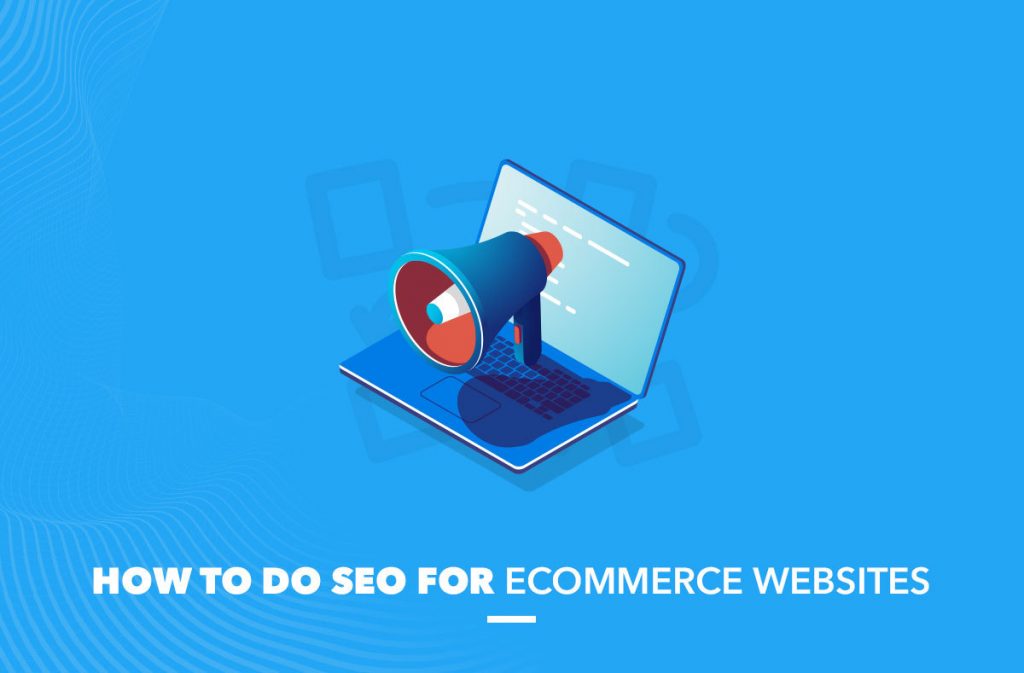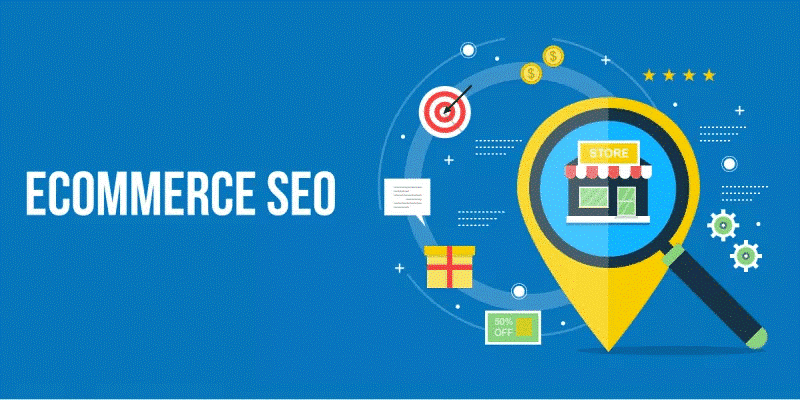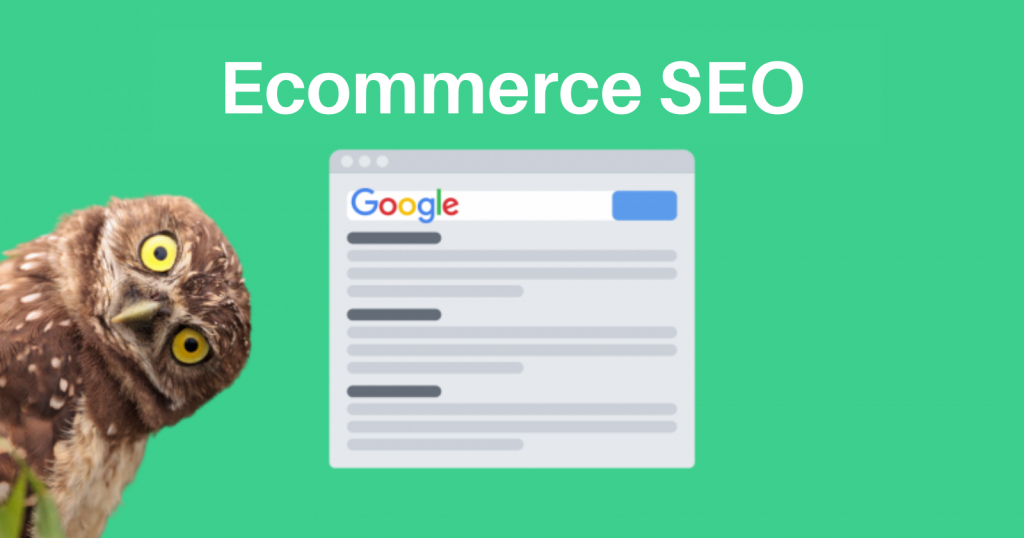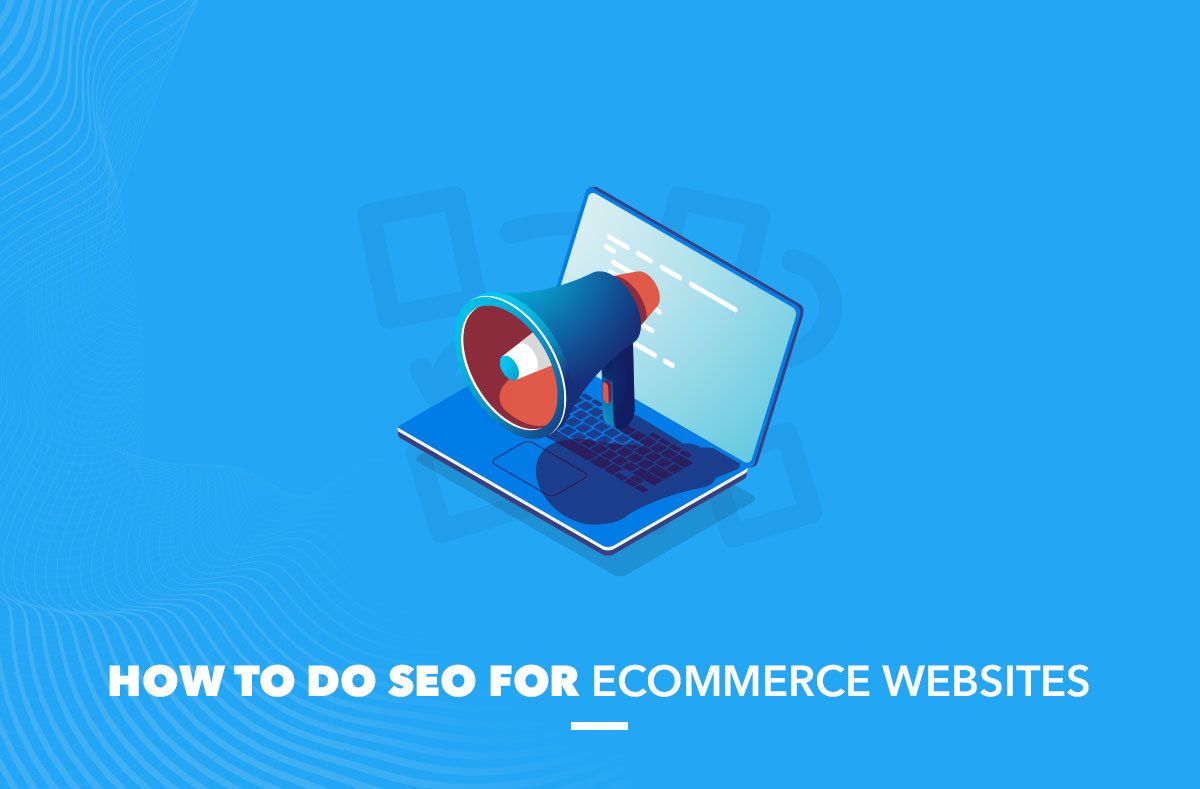
Usually, eCommerce websites strive for organic traffic. Unlike any other marketing traffic, organic traffic brings users for free, and that’s a plus. At the same time, organic traffic is more difficult to gain than marketing-generated one. Specifically, marketing-generated traffic is easier to get and easier to predict. Most eCommerce websites have difficulties with engaging high-quality traffic because unpaid traffic is way harder to generate than an organic one. However, creating high-quality landing pages requires effective eCommerce SEO. Generally, there is a need to review the website, its content and focus on the areas that need improvement.

What Is SEO for E-Commerce?
To start with, SEO is a complex of techniques that help the website to rank higher in google search and to show up for specified search results. A rule of thumb is that the better the website is optimized, the higher this website is ranked in google. In turn, higher ranks in Google help to stand out better and be more visible to the customers. The difficulty here is that content-based websites are simpler to apply SEO techniques. Specifically, it is easy to add keywords to the blog post and include cross-referencing, but it is more difficult to understand how Google ranks search results for eCommerce. Thus, when it comes to eCommerce, SEO techniques are not limited to using keywords and references, but also include a deep understanding of how Google search works and what parameters need to be met when it comes to facilitating buyer’s intent to complete the purchase.
Key Tactics to Include in Your Ecommerce SEO Strategy
There are a lot of strategies to generate organic traffic to your eCommerce website . Usually, the eCommerce SEO strategy includes but is not limited to:
- Using keywords, considering that the keywords are real words that your customers are searching for
- Building website architecture regarding the findings in the keyword research
- Including on-page SEO with strategic keyword optimization, including optimizing meta tags
- Applying technical SEO, including proper using of crawlers that might crawl the website more effectively
- Using local SEO so that the organic traffic comes from the desired area (this is especially important if you have a brick-and-mortar store in addition to the digital one)
- Adding content SEO so that the website content brings as many visitors as possible
- Building links and cross-links so that the authority of the website is higher
- Measuring marketing success with Google tools
E-Commerce SEO Best Practices
SEO for eCommerce is a complex matter because it is difficult to make your website stand out. The basic idea is to generate more organic traffic, but how to attract more people to visit your website? To start with, it is a good idea to work on navigation, improve linking, and add alt tags for images. More useful tips are provided in the paragraphs below.
Ecommerce Keyword Research
Keyword research is the starting point of SEO improvement. Good keyword research means ensuring that the keywords are hitting the needs of your target audience. Also, good keyword research helps to use the exact keywords that might raise your website to page one in the Google search. Thus, when it comes to tracking the keywords, make sure, you are getting the right ones because it is a basis for the success of your SEO strategy.
Site Architecture
Site architecture is a basic tool that a lot of companies forget. First of all, site architecture should be developed in a way to improve the way for the customers to find the exact product they want. Oftentimes, eCommerce websites have millions of pages, and it is not that easy to find the exact product that the customers need. Thus, the architecture of the website should be built to facilitate user flows through your website. When the visitors can find what they need pretty quickly, the chance for completed purchase increases.

Make Sure Your Site Is User Friendly
In addition to user-friendly navigation, there is a need to make sure that your entire eCommerce website is user-friendly. In terms of specialists, you are going to need UX designers to work on your website. To put it simply, your design is not that great if you need to explain something to your users. With a well-developed UX design, you can lead your visitors to the purchase while keeping them engaged and entertained. Practically, there are several basic things to UX that include but are not limited to placing ads in a way that they don’t interfere with browsing, and all the pages of your website are loaded quickly.
Check your home page’s SEO
When building your eCommerce website, make sure that not only your product pages but also your home page is SEO optimized. First of all, your eCommerce website should contain a well-crafted and clickable title. Second, you should have a custom-developed meta description on your website. Third, you should have H1, H2, and H3 subtitles at a minimum on your home page. Finally, make sure target keywords are included in subheadings.
Use Schema Markups to Help Google and Users Understand Content
Schema markups are HTML tags that are used to mark the content for search engines. Thus, when it comes to using markup on your website, it helps to improve the results of your SEO strategy. Moreover, the use of HTML markup helps to show more specific items in the search results. The use of the markup produces rich snippets, and this helps visitors to find the items they want and need quicker. In addition, when adding markup to your pages, think about which type of page you are adding the markup to. There is a difference between markup added to the review page or the music page. When it comes to the product page, it’s recommended to use product markup snippets.

Ensure unique content
It is important to use unique content only because duplicated might rapidly decrease your ranking in google search results. On the web, there are a lot of services that help to track duplicate content. For example, one of the most famous ones is Copyscape that allows checking more than 200 URLs in a batch for $10. Thus, it is easy to check whether you have duplicates or not, just copy and paste your links to the bulk analyzer. Sometimes, you might see your content on another website, and it is the reason to contact the owners and ask them to put a reference to your canonical website.
Don’t Let Page Speed Kill Your Ranking
When it comes to SEO, the technical part of the page means a lot. For example, it is important to have the pages loading fast. Otherwise, you might be punished by Google search results, not showing your pages high enough in the search results. Ideally, the webpage should load in 2 seconds or less, as soon as the visitors are not ready to wait for more. When you notice that any page of your website loads more than 2 seconds, think about the most frequent issues with the pages: too much graphic content that the server cannot handle effectively, too many scripts to run, or a limited speed of your host server.
Link Building for E-Commerce
Link building is a must for SEO because it helps to boost your ranking in Google. When your website has enough links to other websites, this tells Google search engine that your website is credible. Thus, it is shown higher in the search results. Backlinking also works pretty well to boost the ranking. The most straightaway thing to do to increase your linking is to use backlinks to your content or to use social network ads. In addition, creating and linking press releases, blog comments, and case studies is a great idea, too. Just link them properly to your website.

Add a Sitemap
Another influential thing that many forget about is to have a sitemap for your website. When it comes to creating an eCommerce website, make sure you have a sitemap that explains the structure of the website and its pages to the visitors. The sitemap should include the path to the pages, including category and subcategory pages, product pages, and others. Oftentimes, Google has automated tools to help you with SEO, including Google’s Webmaster Tool to generate the sitemap based on the website that you have.
Make Social Sharing Easy
Finally, there is one more tip to generating more organic traffic: make sure your content is easy to share. It might not impact your search ranking but it helps your customers to know more about your brand. In addition, sharing improves SEO as soon as you have mentions on the web that increase organic traffic flow and improve your local SEO. In addition, content sharing helps to expand the content reach and increase backlinking.
Best Ecommerce SEO Tools
In general, for your eCommerce SEO strategy to work, there is a need to use appropriate tools. For example, to increase your visibility on the web, you might improve your SEO with the next tools.
Ubersuggest
Ubersuggest is a great tool for keyword research. It helps to discover the keywords that are most relevant for your products and your audience. Thus, you can boost your SEO performance with the right keywords that attract your customers’ attention. Using Ubersuggest is simple. You have to put the related keywords in the tool and you’ll get the necessary keywords, search volume, and more.
Ahrefs
Ahrefs is a tool that helps to optimize building your SEO strategy with linking. With the Ahref tool, you can track the links to your products and edit the link so that it leads to your products, not your competitor’s ones. Sometimes, it might be a good idea to use the topic and suggest one of your high-quality posts for your readers so that you can continue the dialog with your customers.

ScreamingFrog
ScreamingFrog is a service that is used to find problems with your website. It is a tool to locate the issues, including broken links, duplicate content, and missing meta descriptions. Moreover, when you see any of this, you might correct the issues and add missing information so that your rank in search results is not penalized. Even without premium, you can improve the content of your website up to the point your SEO strategy will benefit considerably.
MOZ
MOZ is a specific tool designed to help you find out and track your keywords. With MOZ, you can find SEO opportunities for your business to increase the awareness of your brand. Also, you can find out the flaws in your keywords, and find more precise ones. In addition, you might fuel your marketing campaign with precisely established metrics.
Conclusion
Practically, building an SEO strategy is not easy, and requires a lot of knowledge and skill. Though it is contemplating to use the strategy of your competitor, it is not the best idea. You need to overperform them, not just follow them. Anyway, building an SEO strategy is not a simple process, and getting help with it might be a great investment in your business growth. At any step of the way, don’t hesitate to get professional help. For example, the SOFTLOFT team is always ready to assist you with the development of a specialized SEO strategy that is going to boost your business. Just contact us, and get the best of the help you might get.



